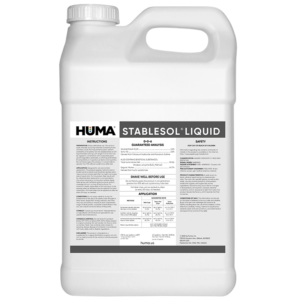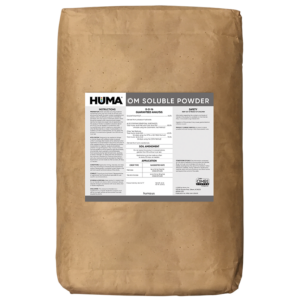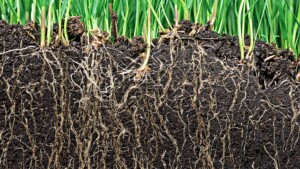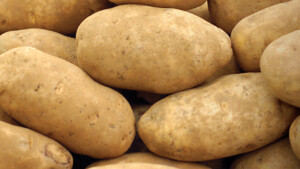K HUME OM
Benefits of Use:
- Uniform granular size promotes even coverage/distribution of humic/fulvic acid for short-term carbon benefit
- With the potassium coating, becomes a short-term soil organic-matter builder
- Increased water penetration
- Increased flocculation of clays
- Promotes conversion of fertilizer into plant-available food
- Increases soil nutrient mineralization
- Short-term soil microbial activation
FAQs
Related Videos
K-Hume OM
K Hume OM — is a 60%-70% humic and fulvic acid combined with potassium hydroxide to make an excellent soil conditioner. Improved solubility (76% soluble) speeds activity in the soil for enhanced microbial uptake.
Learn More
Humate Application Rates
HIGHER YIELDS: Humates lead to higher crop yields and better-quality produce. BETTER SOIL HEALTH: Humic substances help create healthier, more fertile soil with a balanced pH, supporting robust plant growth. REDUCED CHEMICAL INPUTS: With
Learn More
Related Products
Related Case Studies

Huma® MicroMate Humic Acid Makes More Blooms, Faster, on Commercial Petunias
Objective Speeding up the maturity timing of flowers and having more flowers on commercial ornamental plants will make them more marketable and help flower growers produce more potted flower plants per year. The focus of this study was to assess the effects of a natural humic product from Huma® called Micromate on the speed of

Biostimulant Effect of Humic Acids on Tomato Plants Under Nutritional Stress
Introduction In this study (originally published in Frontiers in Plant Science, May 2021, Vol. 12:660224), the biostimulant properties of a sedimentary shale ore-extracted humic acid (HA) were tested on Micro Tom tomato plants under increasing nutritional stress Materials & Methods A sedimentary lignite ore (Idaho), ground to pass a 1,000 µm sieve, was used as

Huma Pro® Mix, pH-Stable Liquid Humic Acid Product, Increases Corn Yield
Conducted by: Bruce Kirksey, PhD, Agricenter International, Memphis, Tenn. Huma® Product: Huma Pro® Mix Background Scientific research shows that humic and fulvic acids are biostimulants—enhancing nutrient availability and uptake, improving plant root growth and mass, and impacting both crop yield and quality. Humic acid products are not all the same. They are marketed in solid
Related Blog Posts

Why Are Humic Substances Called Acids?
By Richard Lamar, PhD Senior Director of Humic Research Bio Huma Netics, Inc. We are accustomed to seeing humic substances (humic and fulvic) in dry/granular form, and we tend to think of acids as liquids. So why are humic and fulvic substances called acids? All substances, solid AND liquid, have a chemical makeup. An acid

Research Report: Huma Gro® X-Tend® B Improves Barley Yield with a ROI of 38:1
In research conducted at the University of Idaho, Huma Gro® X-Tend® B, powered by Micro Carbon Technology® (MCT), has proven to improve barley yield. The boost in production led to a higher net gain per acre with a return on investment (ROI) of 38:1.

Welcome to Huma®: Humic Solutions with a Human Touch
I am extremely proud to officially unveil our company’s new branding and name. We are now Huma®– a 50-year-old legacy ready to be reintroduced to the world! It is a strategic decision to shorten our name from Bio Huma Netics® (BHN) to Huma® and we are confident that this progressive move is in our company









